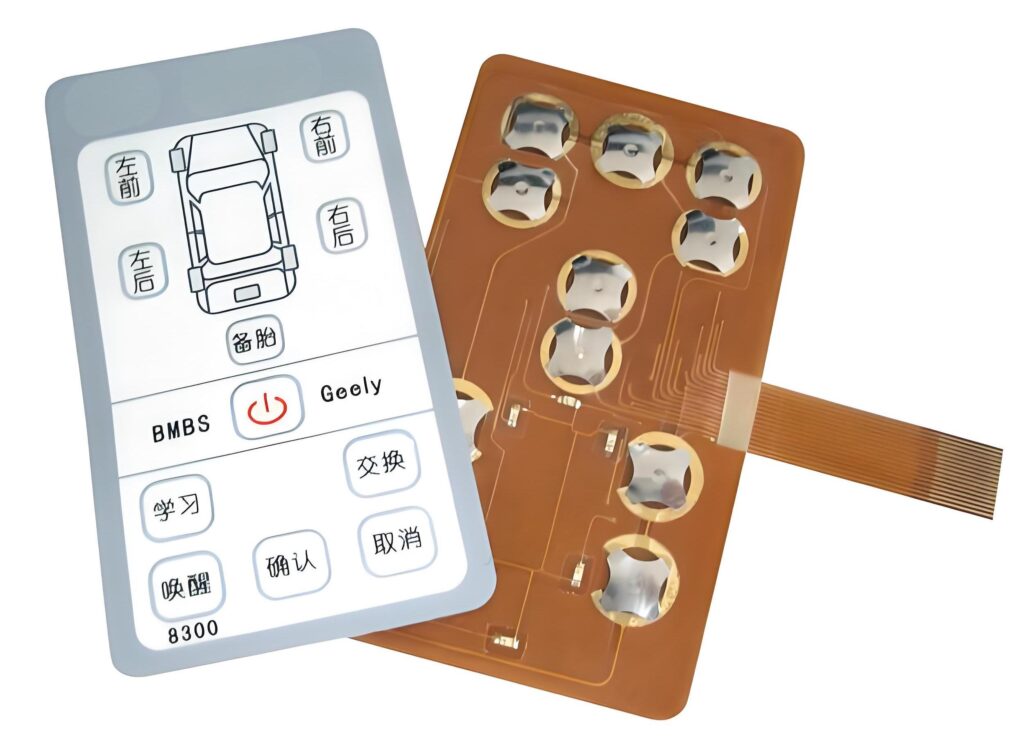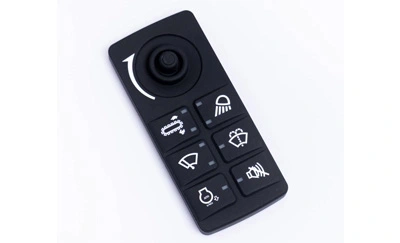Comprehending the Value of Membrane Layer Switch in Modern Electronic Devices
Membrane buttons are integral elements in modern-day digital devices. They provide a blend of functionality and design that boosts individual interaction. Their long lasting and lightweight nature makes them suitable for numerous applications. As sectors progress, the need for customization and advanced functions expands. Comprehending just how membrane layer switches add to development exposes their significance fit the future of electronic devices. What exists ahead for this modern technology?
The Essentials of Membrane Layer Switch Over Technology
Although frequently neglected, membrane switch modern technology plays a crucial role in the modern electronic devices landscape - membrane switch. These gadgets, composed of numerous layers, function as interface for various digital products, ranging from home home appliances to medical equipment. A regular membrane layer switch contains a graphic overlay, a spacer layer, and a circuit layer, which are carefully assembled to create a functional interface.When stress is related to the overlay, the circuit layer is finished, permitting signals to be transferred to the gadget. This technology is recognized for its convenience, making it possible for modification in layout, shape, and capability to meet details individual needs. In addition, membrane layer switches are thin and lightweight, making them suitable for applications where room is a premium. Their toughness and resistance to ecological aspects further boost their appeal, ensuring they can endure harsh conditions while keeping functionality. In general, membrane layer button modern technology is essential to creating effective and easy to use digital tools

Secret Advantages of Membrane Layer Switches Over
Membrane layer changes offer a number of crucial benefits that make them a favored selection in various electronic applications. Their style permits a portable kind element, making it possible for makers to create light-weight and streamlined gadgets. Additionally, membrane switches are resistant to dust, moisture, and chemicals, which boosts their toughness and durability sought after settings. The responsive responses offered by these buttons can improve individual experience, making them intuitive and very easy to operate.Furthermore, membrane switches can be customized with varied graphics and shades, permitting distinct branding chances. The manufacturing procedure is normally cost-effective, especially for high-volume production, as it decreases setting up time and simplifies style. Membrane switches over call for minimal maintenance, adding to reduced general operational expenses. These advantages highlight their growing appeal in modern electronics, where reliability and easy to use user interfaces are essential.

Applications Across Different Industries
The adaptability of membrane switches over enables their prevalent adoption throughout different sectors. In the clinical area, they are frequently utilized in diagnostic equipment and individual tracking systems, using a long lasting interface immune to contaminants. The vehicle sector makes use of membrane buttons for dashboard controls, boosting customer experience with sleek styles that stand up to harsh problems. In consumer electronics, they function as control panels for devices such as microwaves and coffee machine, providing an user-friendly interface that is simple to clean. The aerospace industry uses membrane buttons in cabin controls, where integrity and room efficiency are vital. Additionally, the industrial sector leverages these switches in machinery and control systems to ensure durable procedure popular atmospheres. This wide series of applications underscores the versatility of membrane layer switches, making them indispensable elements in improving capability and individual communication across diverse technical landscapes.
Personalization and Layout Flexibility

Future Trends in Membrane Change Development
Emerging patterns in membrane switch development suggest an expanding focus on improved functionality and more tips here assimilation with wise modern technologies. As customer need for much more innovative digital tools rises, makers are focusing on producing membrane switches that not just serve basic functional functions yet additionally include attributes like touch level of sensitivity, backlighting, and haptic feedback.Furthermore, advancements in materials are expected to boost resilience and ecological resistance, making membrane layer changes suitable for diverse applications in industries such as health Read Full Report care, auto, and consumer electronic devices. The integration of capacitive touch modern technology is likely to end up being more prevalent, enabling sleeker layouts and enhanced user interfaces. membrane switch.Additionally, the surge of the Net of Points (IoT) is motivating the development of membrane layer switches over that can communicate wirelessly with other tools, improving interconnectivity. Generally, the future of membrane layer button technology appears encouraging, driven by technology and the search of easy to use options
Frequently Asked Questions
Exactly How Do Membrane Switches Compare to Conventional Mechanical Switches?
Membrane switches, being much more space-efficient and offering a sleek style, contrast with conventional mechanical switches that supply tactile comments. The previous typically include personalized graphics, while the latter normally ensure resilience and integrity in different applications.
What Products Are Commonly Used in Membrane Layer Switch Production?
Membrane switches are usually created using materials such as polyester, polycarbonate, and printed conductive inks. These materials give durability, responsiveness, and flexibility, making them ideal for numerous applications in digital devices and interface.
Can Membrane Changes Be Repaired or Recycled?
Membrane buttons can commonly be repaired, especially if minor problems develop, such as glue failing or surface damage. Nevertheless, complete reuse is normally restricted as a result of put on and possible destruction of products gradually.
Exactly How Do Environmental Elements Influence Membrane Layer Switch Performance?
Ecological factors, such as temperature level, moisture, Source and direct exposure to chemicals, greatly influence membrane switch performance. Severe conditions can result in degradation, affecting responsiveness and durability, inevitably compromising the capability of the device in various applications.
What Is the Common Lifespan of a Membrane Switch over?
The regular life-span of a membrane layer button typically ranges from 1 to 5 million actuations, depending on factors such as use regularity, ecological conditions, and the products used in production, affecting durability and efficiency longevity. A normal membrane layer switch is composed of a visuals overlay, a spacer layer, and a circuit layer, which are carefully put together to produce a practical interface - membrane switch.When stress is used to the overlay, the circuit layer is finished, allowing signals to be sent to the device. The tactile feedback offered by these switches can boost customer experience, making them easy and instinctive to operate.Furthermore, membrane switches can be personalized with varied graphics and colors, allowing for one-of-a-kind branding possibilities. As consumer demand for much more advanced digital gadgets boosts, manufacturers are focusing on producing membrane switches that not just offer basic functional functions however likewise incorporate features like touch sensitivity, backlighting, and haptic feedback.Furthermore, developments in materials are anticipated to boost durability and ecological resistance, making membrane switches over suitable for varied applications in industries such as medical care, vehicle, and customer electronic devices. The assimilation of capacitive touch innovation is most likely to end up being more widespread, permitting for sleeker designs and improved customer interfaces.Additionally, the increase of the Net of Things (IoT) is triggering the development of membrane layer changes that can communicate wirelessly with other tools, enhancing interconnectivity. Membrane switches, being more space-efficient and providing a smooth layout, comparison with standard mechanical buttons that supply tactile feedback